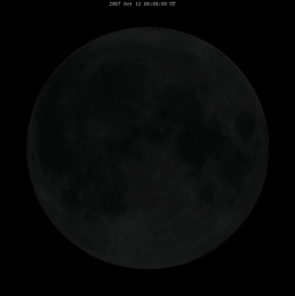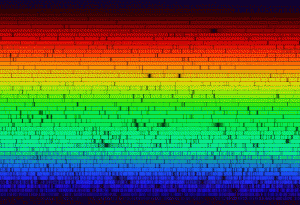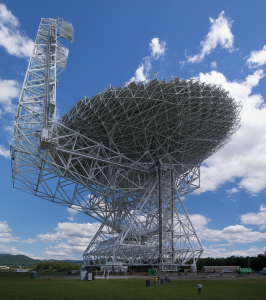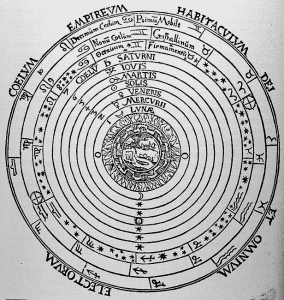This page is under construction.
This page contains:
- A brief summary of each lesson
- A link to each lesson’s video lecture playlist on Skynet University’s YouTube Channel
- Sample supplementary notes from WebAssign
- Sample assignment questions from WebAssign
Orientation
Lesson 1: Celestial Motions

Since the moon’s orbit around Earth is elliptical, sometimes the moon is closer and apparently larger, and sometimes the moon is farther away and apparently smaller.
In Lesson 1, we explore the apparent motions of the stars, the sun, and the moon. We explain the apparent motions of the stars and the sun in terms of the motions of Earth: its daily spin on its axis, its annual orbit around the sun, and the long-term precession of its spin axis. We learn how length of day and the height of the sun in the sky at midday vary with season and latitude. We explore lunar phases, lunar and solar eclipses, and the cycle over which all eclipses repeat.
- Video Lectures on YouTube
- Sample Notes from WebAssign
- Sample Question from WebAssign
- Sample Question from WebAssign
Lesson 2: Copernican Revolution
In Lesson 2, we explore the apparent motions of the planets, as well as attempts to explain these motions throughout history. Specifically, we explore the geocentric models of Aristotle and Ptolemy and the heliocentric models Aristarchus, Copernicus, and Kepler, culminating in Kepler’s three laws of planetary motion. We explore tests of these models by Galileo and others. Finally, we learn how Newton explained Kepler’s empirical laws with physical law and universal law. But we begin by exploring Stonehenge as an example pre-written-history astronomy, or archaeoastronomy.
- Video Lectures on YouTube
- Sample Question from WebAssign
- Sample Question from WebAssign
Lesson 3: Nature of Light

A spectrum of the sun, where some of the light has been absorbed by elements in the sun’s atmosphere, and in Earth’s.
In Lesson 3, we explore how we receive information from the universe, primarily in the form of light. We explore the nature of light, beginning with whether it is a particle or a wave. If it is a wave, what is the medium in which the wave travels? We explore how light is created, and study two examples in detail: thermal radiation and atomic absorption and emission lines. We study the absorption and emission lines of hydrogen, the most abundant element in the universe, in particular. We learn how all of this information can be used to measure compositions and temperatures. We explore the Doppler effect and how it can be used to measure line-of-sight velocities, internal motions, etc.
- Video Lectures on YouTube
- Sample Question from WebAssign
- Sample Question from WebAssign
Lesson 4: Telescopes

The Green Bank Telescope observes the invisible universe, at radio wavelengths — and is the largest moving thing on land!
In Lesson 4, we explore the technologies that astronomers have developed, and continue to develop, to detect light from the universe, at both visible and invisible wavelengths. At visible and near-visible wavelengths, we compare and contrast reflecting and refracting telescope designs, as well as detectors, including spectrographs. We explore why astronomers build bigger and bigger telescopes, and consider both design and atmospheric limitations. We explore technologies that are being developed to overcome atmospheric limitations — to untwinkle the stars. We also explore how light is detected at radio wavelengths, which can be done from the ground, and at other wavelengths, which requires observing from space. We learn that a great deal can be gained by observing the same object at multiple wavelengths.
- Video Lectures on YouTube
- Sample Question from WebAssign
- Sample Question from WebAssign

